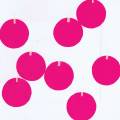Vaigotas - artist book, 2024












Vaigotas is a word invented by my two-year-old daughter Maria, used as a noun to describe what we call seagulls. Nothing new – an exchange of letters identical to so many others made by babies of the same age – and yet so full of intention. The term “vaigotas” – like “gulls” – is a sound, with a written correspondence, intended to designate certain seabirds. However, the term “gulls” – like “seagulls” – has nothing objective about it, and its relation to the animal in question is just as valid in one case as in the other. And yet, there isn’t a bird that passes this way that doesn’t deserve a confident pointing of the finger, followed by the vocative “vaigota!”. Who am I to say that it’s not a “gull” but a “seagull”? Where do I get the certainty or authority to correct Maria? If she has so many certainties – and I have so many doubts – why can’t I adapt?
The same questions can be asked of acting. What makes a simple elongated M less of a seagull than a naturalistic drawing? If this animal is caricatured and has a hat on its head, is it now something else or a seagull with a hat? How can we conceive of a seagull with a hat if we’ve never seen one?
The question raised seems like a frivolous invitation to anarchy, but it is also a warning about the lightness of our institutions, and how in the absence of the existence of truth, or the real, it becomes our responsibility to create it from shards and clippings of information, the consideration of the other and our intention.
From this reflection came the series of works that, following the modus operandi and formats, play with these variants, proposing compositions that range from quasi-scientific representations to more analytical, almost ethereal proposals, covered in abstract or translucent layers that reinforce the shared fragility between words and images.
From the same series there is also a book by the author, with the same title, and which in its transparent pages mimics this construction of possible truth, in an evolutionary process from the indistinguishable to the secret depths of knowledge, to begin again.
May the intention be good.